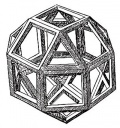Miasma theory
From The Art and Popular Culture Encyclopedia
|
"The uproar about the odors of Paris was abundant proof of the rapid spread of Pasteur's discoveries. In 1880 none of the experts challenged the new theories. The scientific community no longer believed in miasma. Spontaneous generation no longer had any defenders. Once they had become convinced that infectious germs transmitted disease, scientists no longer associated unpleasant odor with the morbific threat. "We can repeat that everything that stinks does not kill, and everything that kills does not stink," declared the conservative Brouardel during the debate." The following year, the Dictionnaire Dechambre confirmed the pathogenic discrediting of smell."--The Foul and the Fragrant (1982) by Alain Corbin |
|
Related e |
|
Featured: |
The miasma theory (also called the miasmatic theory) held that diseases such as cholera, chlamydia or the Black Death were caused by a miasma (ancient Greek: "pollution"), a noxious form of "bad air" (with the same meaning like in malaria).
The notion of miasma not only appeared in the western world, but also in the eastern world, where it had a similar concept in the early history, especially in China. The influence of miasma in the West and the East had a few similarities and differences, and the solutions dealing with miasma also varied. Finally, after years of debate, the miasma theory had been displaced by the germ theory of disease.
Night air
Prior to the late 19th century, night air was considered dangerous in most western cultures. Based on “zymotic” theory, people believed vapors called “miasma” (plural "miasmata") rose from the soil and spread diseases. Miasmata came from rotting vegetation and foul water—especially in swamps and urban ghettos.
Many people and especially the weak or infirm avoided breathing night air by going indoors and keeping windows and doors shut.
In addition to ideas associated with zymotic theory, there was also a general fear that cold or cool air spread disease.
The fear of night air gradually disappeared as understanding about disease increased as well as with improvements in home heating and ventilation.
Particularly important was the understanding that the agent spreading malaria was the mosquitoes (active at night) rather than miasmata.
See also
- Night air
- Miasma
- Polizeiwissenschaft ("Science of police")
- Germ theory of disease

